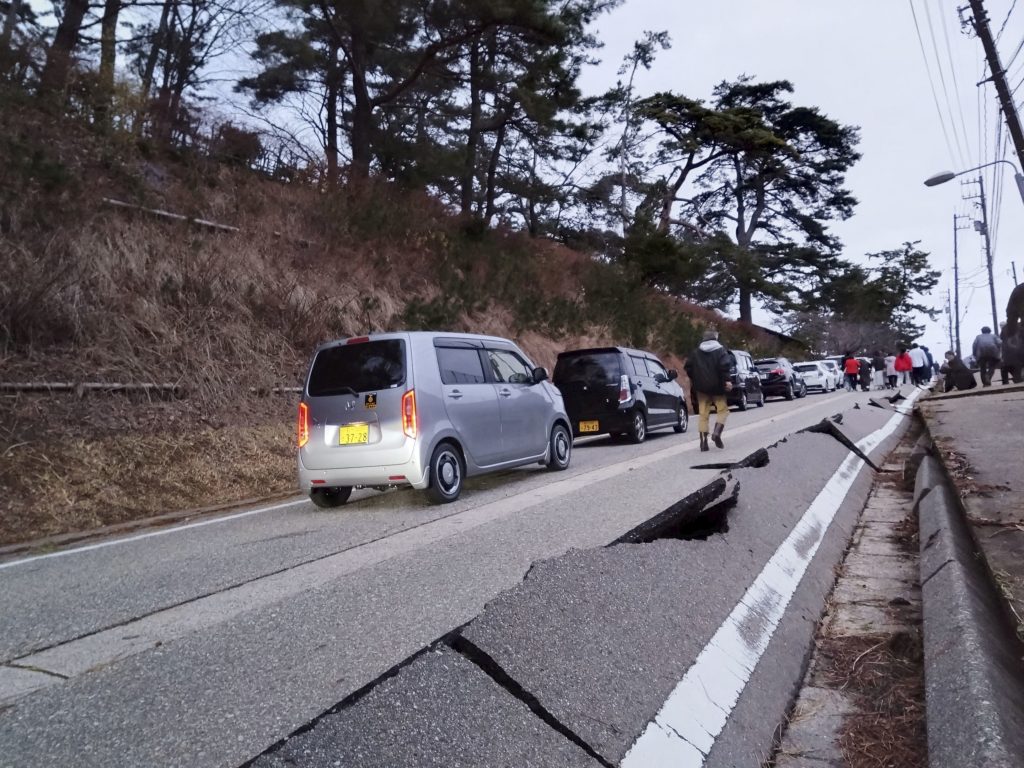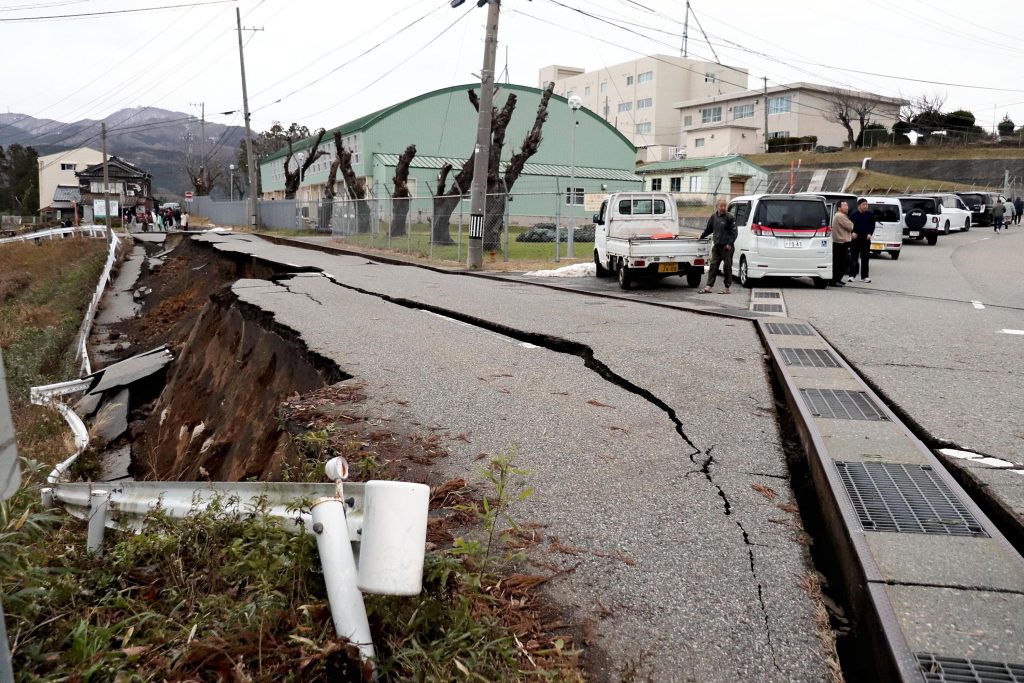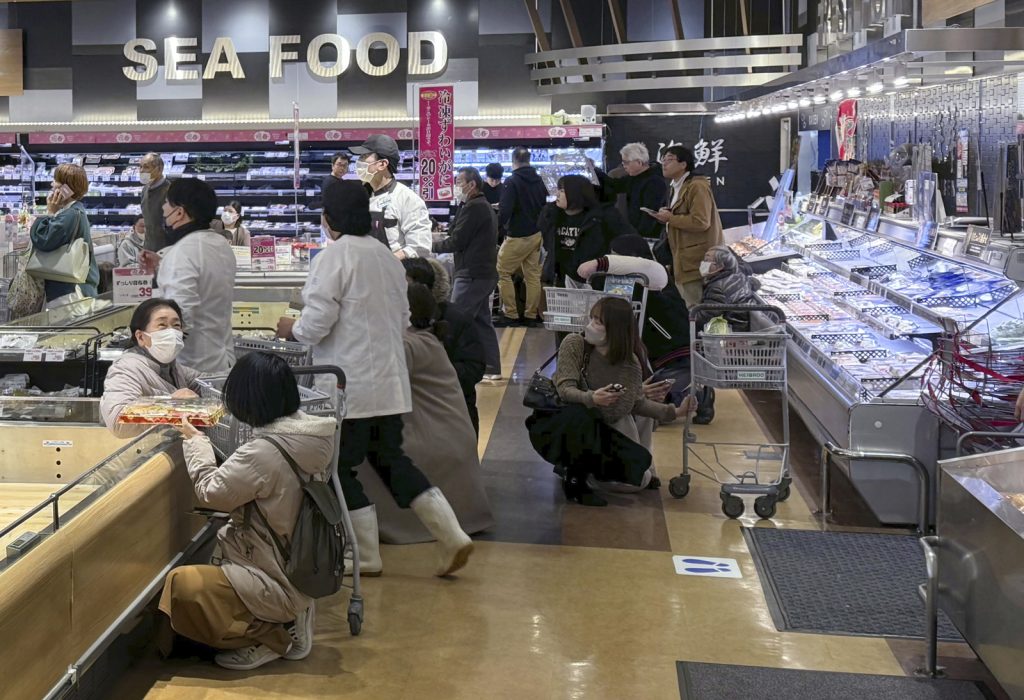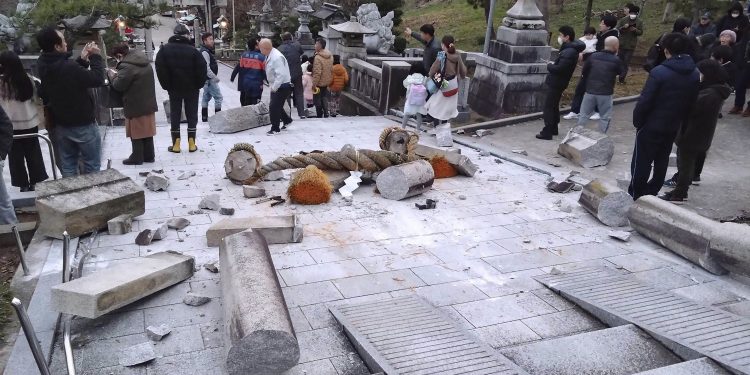On January 1st, a powerful earthquake with a preliminary magnitude of 7.6 struck central Japan, leaving destruction in its wake. The earthquake caused buildings to collapse, knocked out power to tens of thousands of homes, and forced residents in coastal areas to flee to higher ground.
The earthquake triggered waves of about 1 meter along Japan’s west coast and neighboring South Korea, with authorities warning of the potential for larger waves. The Japan Meteorological Agency (JMA) issued tsunami warnings for the prefectures of Ishikawa, Niigata, and Toyama. While a major tsunami warning was initially issued for Ishikawa, it was later downgraded. Russia and North Korea also issued tsunami warnings for some areas.

Tragically, at least one person has been reported dead after a building collapse in Shika Town in Ishikawa. The government has deployed army personnel to assist with rescue operations, as houses have been destroyed and fires have broken out. The extent of the damage is still being assessed, with reports of at least 30 collapsed buildings in Wajima, a town known for its lacquerware. Additionally, a major blaze has engulfed several buildings in Wajima.
Japanese Prime Minister Fumio Kishida has instructed search and rescue teams to prioritize saving lives, despite the challenging access to the affected areas due to blocked roads. Kishida also urged residents in areas at risk of tsunamis to evacuate immediately. A bright yellow warning flashed across television screens, advising specific coastal areas to evacuate.
The earthquake also impacted the capital city of Tokyo, located 500 km from Wajima. More than 36,000 households lost power in Ishikawa and Toyama prefectures, where temperatures were set to drop to near freezing overnight. Telecoms operators reported phone and internet outages in some areas. Train lines, high-speed rail services, expressways, and airports were affected, causing disruptions in transportation.

The earthquake occurred at a sensitive time for Japan’s nuclear industry, which has faced opposition since the Fukushima disaster in 2011. However, the Japan Nuclear Regulation Authority confirmed no irregularities at nuclear power plants along the Sea of Japan. The closest nuclear power station to the epicenter, Hokuriku’s Shika plant in Ishikawa, had already halted its reactors for regular inspections and was unaffected by the quake.

The earthquake coincided with the Jan. 1 public holiday when millions of Japanese traditionally visit temples to celebrate the new year. Popular tourist destinations, such as Kanazawa and the Nagano region, were affected. In Kanazawa, a shattered stone gate lay at the entrance of a shrine, causing concern among worshippers. Tourists in the Nagano region, including snowboarder Johnny Wu, felt the quake’s intensity and expressed worry about its potential escalation.
The powerful earthquake in central Japan has caused significant destruction, loss of life, and disruption to coastal areas. The government, along with search and rescue teams, is working tirelessly to assist those affected and ensure the safety of residents. The aftermath of this earthquake serves as a sobering reminder of the ongoing seismic activity in the region and the need for preparedness in the face of such natural disasters.


















